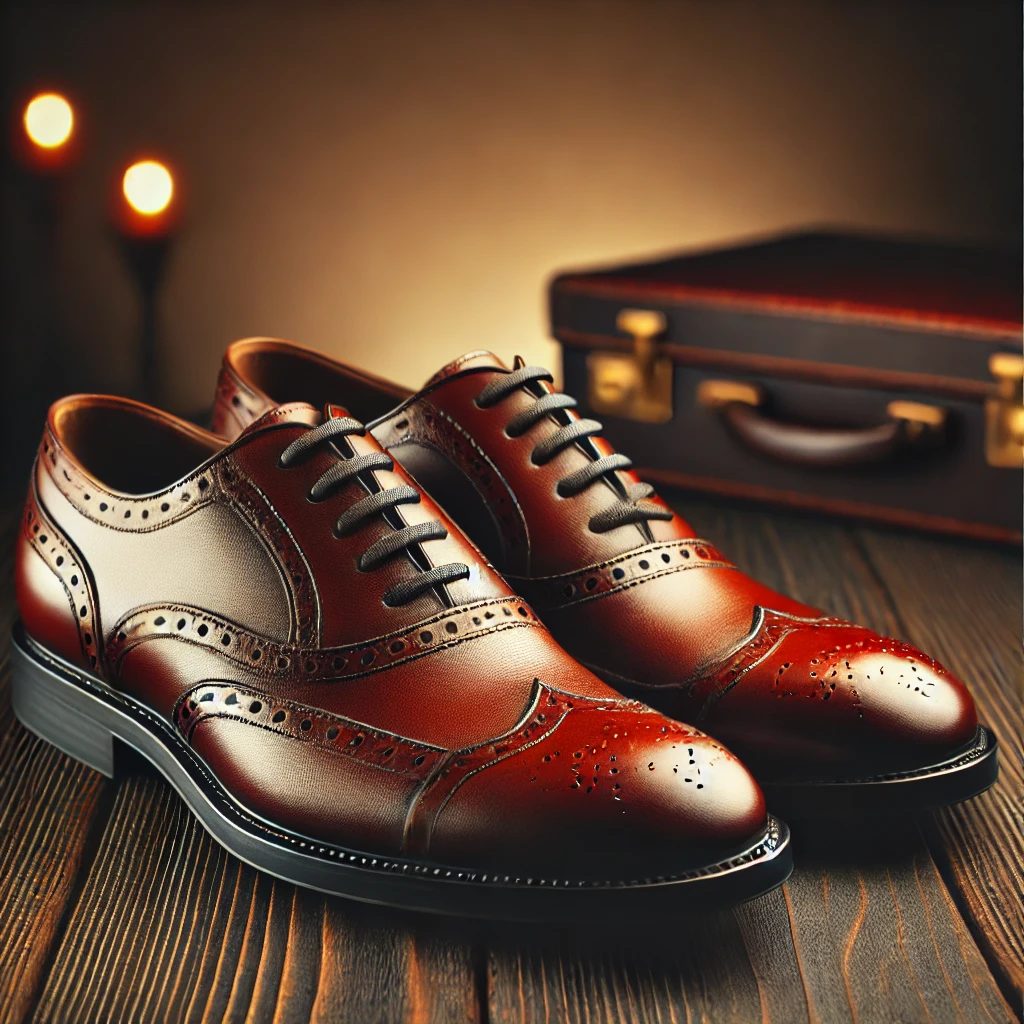Leather Oxford shoes have been a hallmark of style and elegance for centuries, making them a staple in fashion-conscious markets worldwide. The business behind these timeless shoes is a complex ecosystem that balances craftsmanship, branding, and market trends. For entrepreneurs and established businesses alike, understanding the nuances of this sector is key to sustaining growth and building a brand synonymous with quality and sophistication.
1. Market Overview: Demand and Growth
The global demand for formal leather shoes, including Oxfords, has shown resilience even as trends shift toward more casual wear. This demand is driven by a range of factors:
- Formal and Business Attire: Leather Oxford shoes continue to be an essential part of professional and formal wardrobes. While many workplaces have adopted more relaxed dress codes, traditional business sectors, high-profile events, and fashion enthusiasts still value the refined look of Oxfords.
- Emerging Markets: Expanding middle classes in regions like Asia-Pacific have bolstered the demand for high-quality, handcrafted footwear. Brands that cater to these markets with classic designs and superior quality can tap into new revenue streams.
- Sustainability Trends: Consumers are increasingly looking for products that combine luxury with sustainable practices. Brands that highlight eco-friendly materials and ethical manufacturing gain an edge in this competitive landscape.
2. Manufacturing Insights: From Craftsmanship to Scale
Leather Oxford shoes are known for their meticulous craftsmanship. Here’s how the manufacturing process impacts the business:
- Quality Leather Sourcing: The choice of leather is crucial for Oxfords, as it determines not only the shoe’s appearance but also its durability. High-end businesses often partner with reputable tanneries in Italy, France, or Spain to source premium leather.
- Construction Techniques: The Goodyear welt construction, a hallmark of quality, is widely used for crafting Oxfords. This method involves stitching the leather upper, lining, and sole together, making the shoe more durable and repairable. However, this process is labor-intensive, which adds to production costs.
- Handcrafted vs. Machine-Made: While some manufacturers emphasize handcrafting to maintain traditional techniques and higher price points, others blend automation with artisanal work to balance cost and craftsmanship. Striking the right mix can differentiate a brand in the market.
3. Branding Strategies for Success
Creating a successful leather Oxford shoe brand involves more than just quality production; it requires a deep understanding of branding, marketing, and customer loyalty:
- Heritage and Storytelling: Successful brands often leverage their history or create a compelling narrative that highlights craftsmanship, tradition, and exclusivity. This storytelling helps build emotional connections with customers, fostering loyalty.
- Targeting Niche Markets: Some businesses choose to focus on niche segments, such as vegan leather alternatives or bespoke Oxfords tailored for individual customers. Specializing in a specific area can create a loyal following and distinguish a brand from mass-market competitors.
- E-commerce and Omnichannel Strategies: With the shift to online shopping, brands need a robust digital presence. High-quality product photography, virtual fitting tools, and customer testimonials are essential for convincing buyers to invest in premium footwear online. However, maintaining a balance with physical stores or showrooms can add credibility and offer hands-on experiences.
4. Challenges in the Industry
While the leather Oxford shoe business holds significant potential, it comes with its own set of challenges:
- Rising Production Costs: Leather prices and skilled labor costs continue to increase. Brands must find ways to manage these expenses without sacrificing quality or raising prices excessively.
- Supply Chain Disruptions: Events like pandemics or geopolitical tensions can disrupt supply chains, affecting leather availability and timely delivery. Diversifying supply sources and improving logistics is essential for resilience.
- Competition and Market Saturation: The market is flooded with brands offering leather Oxfords at various price points. New entrants need to carve out unique selling propositions to stand out.
5. Leveraging Innovation and Technology
One way for businesses to set themselves apart in the competitive landscape is by embracing innovation. Technology can play a crucial role in redefining the customer experience and enhancing product quality:
- 3D Scanning and Customization: Advanced 3D scanning technology allows brands to offer bespoke fitting services, ensuring a perfect fit for customers. This personal touch can elevate a brand’s status and lead to higher customer satisfaction and loyalty.
- Sustainable Alternatives: Innovating with new materials like lab-grown leather or sustainable leather alternatives can meet eco-friendly demands. This not only aligns with modern consumer values but can also open up new, younger demographics interested in ethical fashion.
6. Keys to Building a Sustainable Business
For businesses aiming to succeed in the leather Oxford shoe market, sustainability and quality must go hand in hand:
- Eco-Friendly Practices: Adopting sustainable practices, such as using vegetable-tanned leather or recycled packaging, can appeal to environmentally conscious consumers. Highlighting these efforts in marketing campaigns can also enhance a brand’s image.
- Timeless Design Over Trends: Focusing on classic designs that withstand fashion cycles ensures long-term sales. Leather Oxford shoes, with their traditional appeal, are well-suited for this strategy.
- Customer Engagement: Brands should focus on building strong relationships with their customer base through excellent customer service, limited edition releases, and collaborations with influencers or other luxury brands.
Conclusion
The business of leather Oxford shoes is as intricate as the craftsmanship that goes into making them. While challenges like rising production costs and market competition are significant, brands that prioritize quality, embrace sustainability, and master strategic marketing can carve out a successful niche. Leveraging technology, telling a compelling brand story, and staying committed to timeless elegance will ensure a place in the ever-evolving footwear industry.
